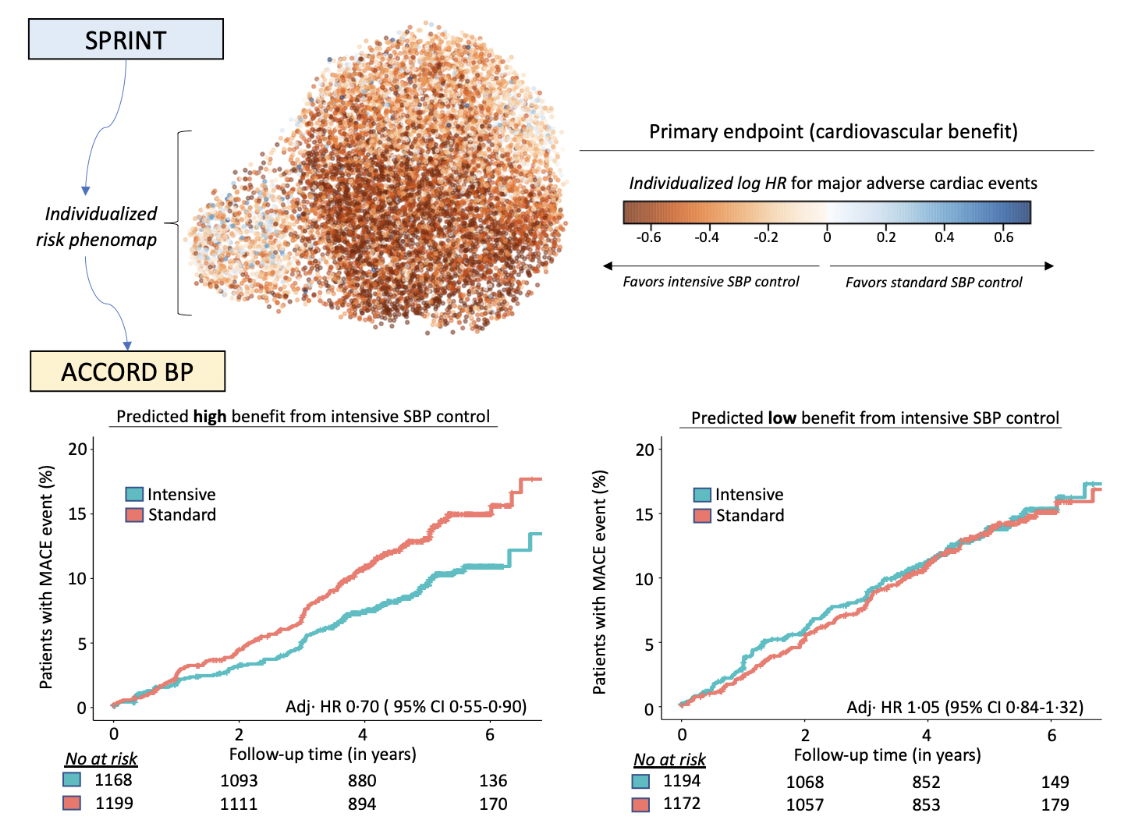Yale-led team develops machine learning tool for personalized hypertension treatment
Yale researchers developed a machine learning tool that may guide personalized antihypertensive management

Courtesy of Evangelos Oikonomou
Researchers have created a new tool to assist with hypertension treatments via machine learning.
Hypertension is the most prominent modifiable risk factor for major cardiovascular events. According to the National Center of Health Statistics, part of the Center for Disease and Control, around 47 percent of adults in the United States. have hypertension or are taking an antihypertensive.
To analyze whether the superiority of an intensive versus standard antihypertensive management can be explained by patient characteristics, Evangelos K. Oikonomou, Yale Cardiology fellow, Erica S. Spatz, Yale associate professor of cardiology and Rohan Khera, Yale assistant professor of Cardiology and director of the Cardiovascular Data Science Lab, have developed a machine learning tool that may guide personalized antihypertensive treatment, using data from two landmark clinical trials.
“In an era when multiple therapies are emerging, the ability to make personalized treatment decisions using data-driven approaches is essential to achieve precision health care,” Khera said. “It is also important to fully leverage the contributions of participants in randomized clinical trials by learning information beyond the population-level results.”
Despite the availability of highly effective antihypertensive medications, the level at which action should be taken to lower one’s systolic blood pressure, has been debated in the medical field.
To address this, two clinical trials, Systolic Blood Pressure Intervention Trial, or SPRINT, and Action to Control Cardiovascular Risk in Diabetes Blood Pressure, or ACCORD, evaluated the cardiovascular benefit of a target systolic blood pressure of <120 mmHg compared to <140 mmHg in patients with and without type 2 diabetes mellitus.
The Yale team used the individualized participant data from these trials as the basis for their machine learning tool: Pressure Control in Hypertension, or PRECISION.
The team’s method makes use of computational representations to produce the study’s results for each individual in a trial population, displaying patients with similar characteristics in closer proximity to one another in the resulting simulated graph, or “space.” Then, to find the patient profiles that would benefit most from the intervention, the team performs an analysis focusing on the space of each participant.
“We can then use this graph or representation to compare the outcomes in patients that got assigned to an intensive versus a standard blood pressure lowering strategy,” Oikonomou said.
This approach permits the team to observe the effects of the treatments on an individual and personalized level as opposed to that of an entire population.
Khera emphasized the strength of PRECISION’s framework, as well as the value of machine learning. Furthermore, he highlighted that artificial intelligence enhanced clinical trials would reduce the cost of trials, as well as the time to access effective treatments.
“Our methods are innovative, but their key strength is the conceptual framework,” Khera said. “We hypothesized that developing machine learning-based methods that can infer response to therapies from diverse populations enrolled in studies. We have now proven the value of this approach in 3 separate domains.”
The team hopes that PRECISION can be used to help foster the development of safer clinical trials.
“First, we would like to highlight that the proposed algorithm, PRECISION, is only meant to be used for research purposes until we prospectively validate its clinical utility,” Oikonomou said. “Second, we feel that our broader approach can be used to define a more personalized interpretation of clinical trials of diagnostic and therapeutic interventions. Finally, we are currently in the process of exploring the value of our technology in designing smarter clinical trials that are more efficient and safer.”
Marc A. Suchard, professor of biostatistics at the University of California Los Angeles and co-author of the study, agreed.
“We hope to apply what we have learned about individualized treatment to a growing number of clinical domains.” Suchard added.
The study was featured in the journal Lancet Digital Health.







